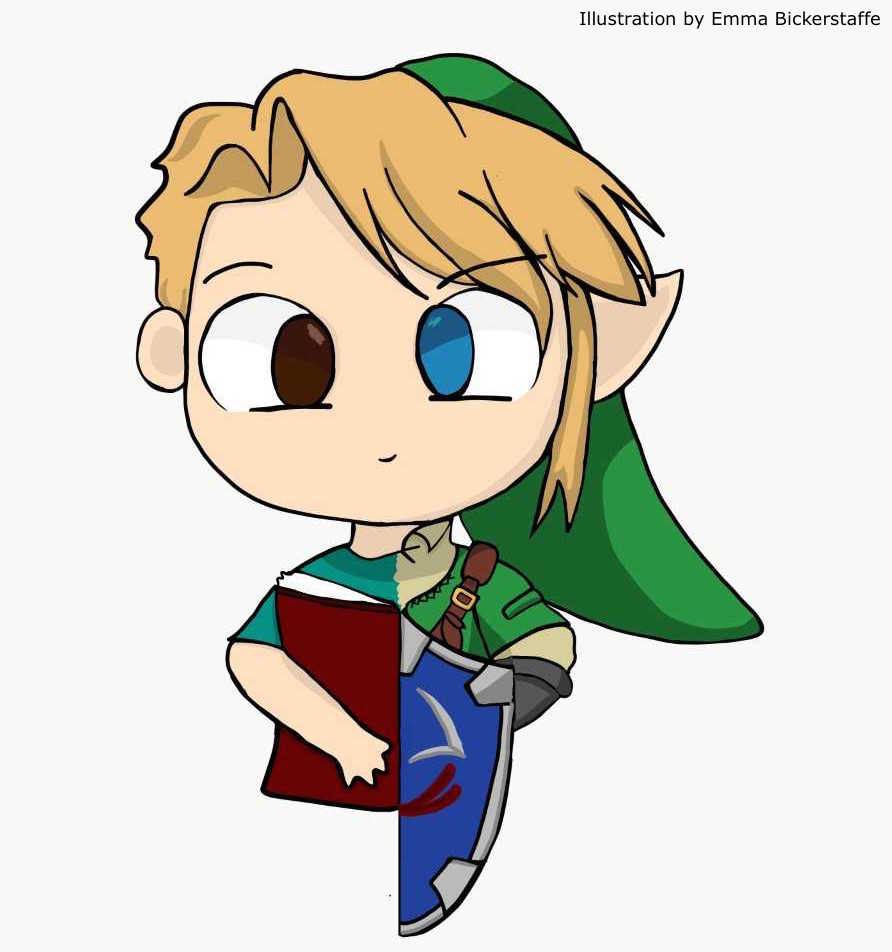Welcome to The Alexander Letters of Ludology (TALL), a bi-weekly column with a stretch of a name dedicated to the study of play, community, digital literacy and good ol’ fashioned video games.
I love stories. I will attempt to avoid mentioning it anymore than that. I do not intend to be possessive about it. I do not love stories more than you or anyone else. But a couple of years ago, I decided to center my major around stories, simply because I struggle to see anything more important. Stories have an ability to manipulate our thoughts, emotions, attitudes and beliefs; an ability to explore worlds beyond our own, shape our view of reality and open or close ourselves to others. For me, that all started with games.
The following is an introduction to my experiences with storytelling in games, touching on interaction in ludology and narratology along the way, and hopefully siring subsequent articles which will hone in on specific types of storytelling in games.
“The Legend Of Zelda: Ocarina of Time” (OoT) was my first fairytale; a simple good-versus-evil ordeal. Knight saves the kingdom from an evil overlord in classic hero’s journey. Sure, I knew “Cinderella,” “The Three Little Pigs” and “Mother Goose.” I was no stranger to that style of stories between the Bible and all of my favorite childhood series. But Zelda put me in direct contact with the narrative elements. Link’s accomplishments were my own. His knowledge was my knowledge. His relationships were formed through my choice to communicate and proceed. Subsequently, the game held an immediate impact on me.
As a matter of fact, “OoT”’s first boss, a gigantic arachnopod named Gohma, scared me so much, I stopped playing. I eventually faced my fears and defeated the monster. In a game revolving around courage, I could not help but reflect on my accomplishment in relation to the story. I physically overcame my fear, just like the hero did, to help the world and find out what happened next.
That interaction with a narrative put an imprint on my brain. Interactivity is so often what draws players to games and an element that we point to when distinguishing games from other mediums. However, the term interactivity can get muddled. Eric Zimmerman writes about this at length in his article “Narrative, Interactivity, Play and Games: Four Naughty Concepts in Need of Discipline.” (The article was really interesting and tackled some tough to explain concepts about what makes games so fun, as well as giving language to talk about it.)
To reduce confusion, he defines interactivity in four ways, giving different levels through which one can interact with a text: cognitive, functional, cultural and explicit.
Cognitive interaction is essentially the mental interpretations one makes with a text or story. Functional interaction is the physical interaction with a text. Are you handling a book? Are you playing the game with a controller? VR? Keyboard and mouse? How did it look, feel, sound?
Cultural interaction is what happens outside of and around a text. Think fandoms. It is the communal deconstruction, recreation and sharing of the textual elements. It is talking to your buddies about how cool the story of the game was. As you can see, each of these types of interaction apply to almost every medium. It is the last type, explicit, that sets games and choose-your-own-adventures apart.
Explicit interaction is the ability to make decisions that directly impact the narrative itself. A memorable moment and perfect example is Commander Shepard’s face-off with the Rachni Queen in “Mass Effect.” You have the choice to eradicate or save an entire alien species, and the narrative plays out with that effect. While “Mass Effect 3” in particular came under scrutiny for meaningless decisions in the game’s greater narrative, the endings to subplots and romances were often entirely up to player choice.
These four varieties of interaction are not mutually exclusive. They layer and combine to deliver the complete experience of a piece of media, particularly in games. I would argue, however, that cognitive interactivity is enhanced, or at least altered, when the narrative plays out through actions and decisions rather than language, visuals or symbols, a quality that is often exclusive to games.
Returning to our example, “Ocarina of Time” lacks almost any explicit interactivity, and yet, the experience of playing out the “narrative” of the game is vastly different than if you would read a well-crafted version of the same plot; narrative being the up-and-down, scene-by-scene, moment-by-moment progression of an individual scene scape.
Take the final boss fight of “Ocarina of Time,” for example. There is only one ending within the story, so the player must succeed in order to progress the game and finish the story; like a movie where you know the hero will be successful. But the dramatic tension of success and failure that often propels interest, the question of how close the fight will be, what strategies, tactics and equipment the hero will use, and how long and hard it is for the player/hero to do so is where the cognitive interaction of the player excels in a way that other mediums cannot replicate.
Furthermore, in order for the plot to happen, say Link inflicting damage upon his foe Ganon, the player presses a button to witness and cause that event. That particular moment of the narrative is directly connected to an action, an output of pressing a button, rather than an input of reading, watching or listening.
Alexander Schmidt is a fourth-year student majoring in English with a minor in communications studies. AS849426@wcupa.edu

